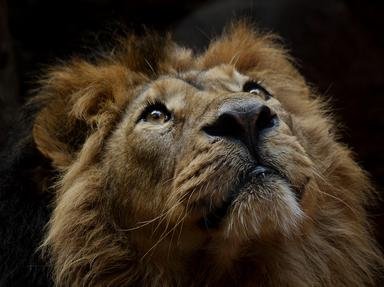Quiz Answer Key and Fun Facts
1. The Champawat Tiger was famous for killing 436 people in Nepal and India in the late 19th and early 20th centuries.
What kind of tiger, with the trinomial name Panthera tigris tigris, was she?
2. Between March and December of 1898, two lions wreaked havoc among a construction crew building a bridge over the river Tsavo in Kenya.
As part of the subspecies of lion Panthera leo melanochaita, for what physical feature are male Tsavo lions known?
3. The Beast of Gévaudan terrorized the former French province between the years 1764 and 1767, with more than 200 attacked and 113 dead (according to a 1987 study).
Louis XV sent two professional hunters of which kind of animal to track it down?
4. Kesagake was a giant bear that terrorized the village of Sankebetsu, Hokkaido, Japan in 1915, killing seven people in the space of five days.
What kind of bear was it, the largest predatory animal in Japan?
5. In the summer of 1916, residents of the Jersey Shore were subjected to a series of shark attacks that killed four people. Although never definitively proven, the species in this photo was believed to be the likely culprit.
By what name is Carcharodon carcharias better known?
6. Since the early 20th century, the legend of Two Toed Tom, a 'red-eyed hell-demon' in alligator form has been a story to scare your children with in Alabama and Florida.
What is the binomial name of the alligator species found in North America?
7. Although the Leopard of Panar killed over 400 people, it was not the most famous man-eating leopard of the time, largely due to the remoteness of the region.
Leopards (Panthera pardus) are the smallest of the five extant species within the genus Panthera.
8. The Sloth Bear of Mysore was responsible for the deaths of twelve people and the mauling of more than 20 others. While this species of bear is known to be aggressive, they rarely become man-eaters. Sloth bears are considered a myrmecophagous bear species, meaning that they normally eat what?
9. Three attacks in a 5-mile stretch of the Kali river in 1988 and 2007 prompted an investigation as to the culprit. After discounting all other options, it was concluded that this man-eater had to be a giant devil catfish of at least 200 lbs (90.7 kg).
By what other odd name is this fish known?
10. During the Second World War, the Battle of Ramree Island (early 1945, Burma Campaign) saw a thousand retreating Japanese soldiers face another kind of foe. Having been forced into inland mangrove swamps, a large number of them were killed by the swamps' ferocious denizens.
What 'seasoned' species of crocodile, with the binomial name of Crocodylus porosus, were responsible?
Source: Author
reedy
This quiz was reviewed by FunTrivia editor
rossian before going online.
Any errors found in FunTrivia content are routinely corrected through our feedback system.
